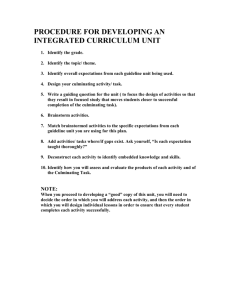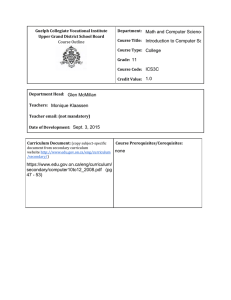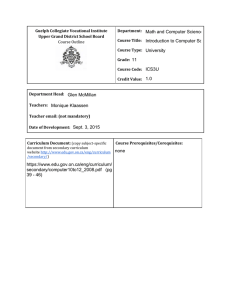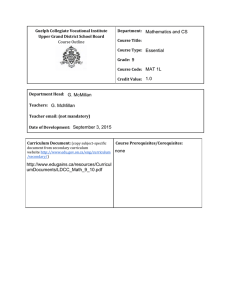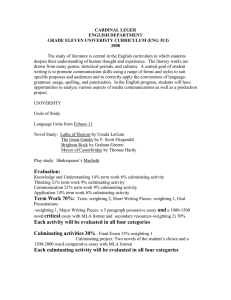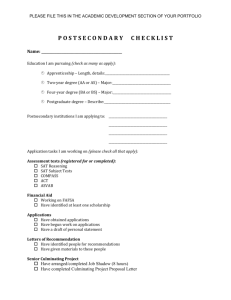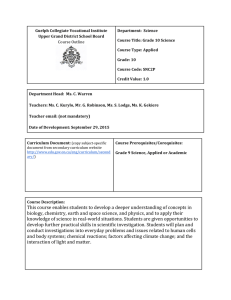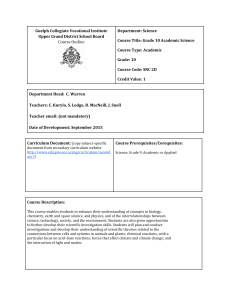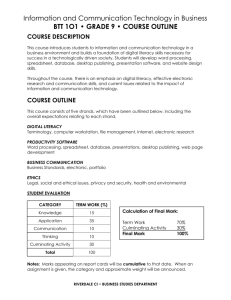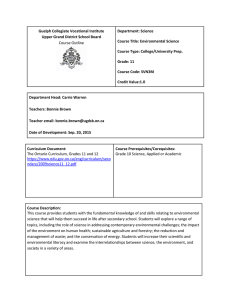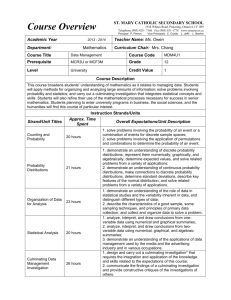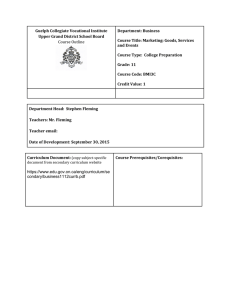Business Leadership
advertisement
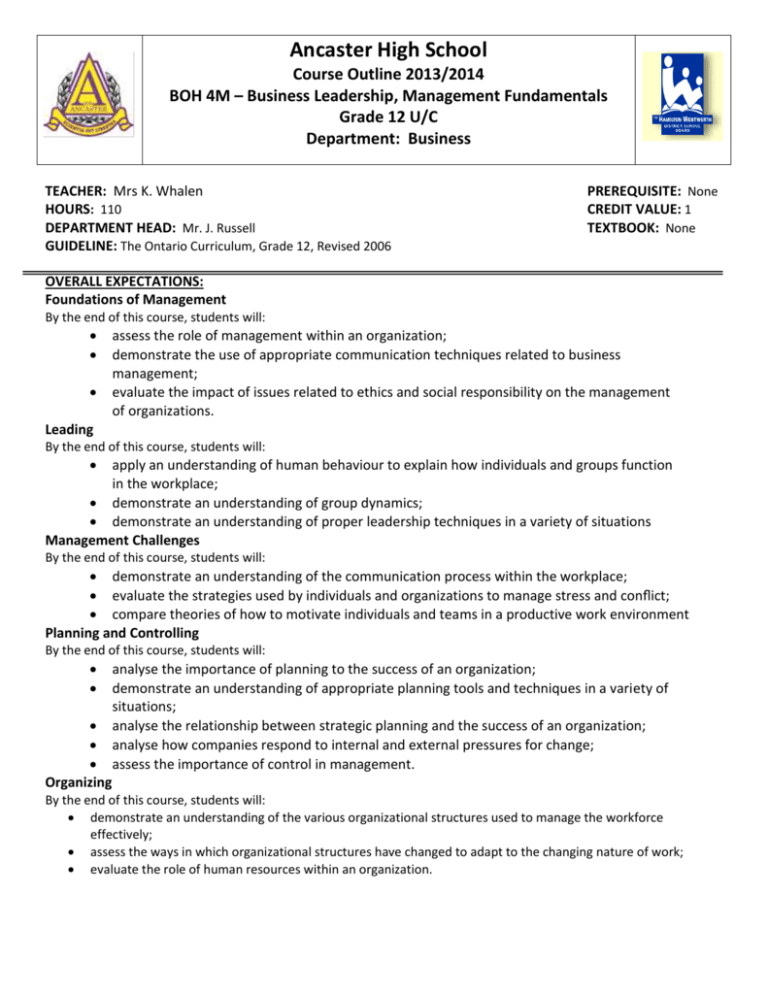
Ancaster High School Course Outline 2013/2014 BOH 4M – Business Leadership, Management Fundamentals Grade 12 U/C Department: Business TEACHER: Mrs K. Whalen HOURS: 110 DEPARTMENT HEAD: Mr. J. Russell GUIDELINE: The Ontario Curriculum, Grade 12, Revised 2006 PREREQUISITE: None CREDIT VALUE: 1 TEXTBOOK: None OVERALL EXPECTATIONS: Foundations of Management By the end of this course, students will: assess the role of management within an organization; demonstrate the use of appropriate communication techniques related to business management; evaluate the impact of issues related to ethics and social responsibility on the management of organizations. Leading By the end of this course, students will: apply an understanding of human behaviour to explain how individuals and groups function in the workplace; demonstrate an understanding of group dynamics; demonstrate an understanding of proper leadership techniques in a variety of situations Management Challenges By the end of this course, students will: demonstrate an understanding of the communication process within the workplace; evaluate the strategies used by individuals and organizations to manage stress and conflict; compare theories of how to motivate individuals and teams in a productive work environment Planning and Controlling By the end of this course, students will: Organizing analyse the importance of planning to the success of an organization; demonstrate an understanding of appropriate planning tools and techniques in a variety of situations; analyse the relationship between strategic planning and the success of an organization; analyse how companies respond to internal and external pressures for change; assess the importance of control in management. By the end of this course, students will: demonstrate an understanding of the various organizational structures used to manage the workforce effectively; assess the ways in which organizational structures have changed to adapt to the changing nature of work; evaluate the role of human resources within an organization. TEACHING STRATEGIES (include, but not limited to): Providing appropriate accommodation for students on IEP’s and for English Language Learners and for those who are First Nations, Metis or Inui; Utilizing Student Support and Student Alternative Support Programs; Contacting parents for support and assistance; Using diagnostic assessment and check-in points to monitor student progress; Providing differentiation of instruction and assessment to meet the needs of diverse learners; Providing ongoing descriptive feedback that is clear, specific, meaningful, and timely to support improved student learning; Creating lessons, and assessment and evaluations, that are carefully planned to relate to the curriculum expectations and learning goals, and as much as possible to the interests, learning styles and preferences of all students; Developing students’ self-assessment skills to enable them to assess their own learning, set specific goals, and plan next steps for their learning. ASSESSMENT AND EVALUATION OF WORK: Assessment and evaluation will be based on the provincial curriculum expectations and the achievement levels outlined in the curriculum policy document. Students will be given numerous and varied opportunities to demonstrate their achievement of the expectations across the four categories of knowledge and skills. Midterm and final marks will be calculated using the prescribed learning strands with the following weighting: Strand 1. 2. 3. 4. 5. Foundations of Management Leading Management Challenges Planning and Controlling Organizing Weighting 20% 25% 10% 25% 20% Evidence of achievement can be determined from a variety of sources, including but not limited to: in-class assignments, class presentation, open-ended questions, observations, quizzes, unit tests, investigations, projects, conversations, portfolios, anecdotal records, self assessments, etc. CULMINATING ACTIVITY Culminating activities occur at or near the end of a course. They form part of the final 30% of a student’s mark. If a student is absent from a culminating activity, they must provide a doctor’s note. The culminating activity will not normally be re-scheduled. For this course, the culminating activity will occur: May 28 – June 12 And will consist of the following: Students will create and plan a business endeavor which includes both a written report and presentation that covers the overall expectations of the five strands. MARK CALCULATION: Interim: A report will be given to reflect how well the student is progressing with suggestions for improvement. Term Work: 70% of the overall grade (from all term evaluations) Final Evaluation(s): 30% of the overall grade (may include culminating activity, final exam or a combination of the two) Teachers will take various considerations into account before making a decision about the grade to enter on the report card. Determining a report card grade will involve teacher’s professional judgement and interpretation of the evidence and should reflect the student’s most consistent level of achievement with special considerations given to the more recent evidence. Marks are not merely a calculation of averages, but an evaluation of the consistent achievement of the student.
